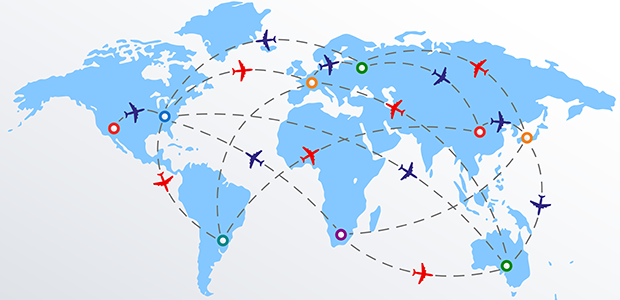
A short history of cross-border commerce & how to navigate it
Cross-border commerce has created a new digital age of endless possibility. Brands and companies can expand into untapped markets, as well as grow their visibility with potential new consumers who aren’t dependent on localised commerce.
In a nutshell, cross-border commerce is the process of selling goods in international countries. Sales aren’t limited to a potential retailer or consumer; cross-border commerce can also take place between businesses.
Developing technologies provide access to international markets and the value of cross-border commerce continues to rise.
A short history of cross-border commerce
The landscape of business changed when Jeff Bezos founded Amazon in 1994 in Seattle, US. The innovation of this platform – a 24/7, international, cross-border shopping experience – facilitated technological advancement that continues to improve competition between sellers and increases consumer demand.
The launch of Amazon caused a historic boom in international trade. Businesses had to consider how to improve and advance in localisation, logistics, and payment options.
Ecommerce platforms such as Magento were launched, giving users access to unique features that would build relationships with their customers and boost their sales. Online marketplaces such as Alibaba transformed the way businesses streamlined their payment platforms, as consumers began to depend on platforms such as PayPal and Stripe to make their purchases.
Due to the COVID-19 pandemic, the growth of ecommerce platforms has substantially risen as consumers switch to online shopping; for example, Amazon’s international sales increased by 28.3%. With more and more people looking online to buy their products quickly and efficiently without leaving the comfort of their homes, the ecommerce industry will only expand.
Navigating international expansion
It’s good business sense to want to dive into delivering cross-border commerce as quickly as possible, but you will need a solid plan for expansion.
- Carry out your research. You must know the ins and outs of the country you’re hoping to grow your business in. With the wealth of online information, there’s no excuse for not fully understanding the fundamental dynamics of a country’s business market.
Understand tax laws, trade rules, regulations, payment methods and any cultural norms before you explore trying to sell.
- Don’t bite off more you can chew. As Steve Jobs once stated: "Do not try to do everything. Do one thing well."
Target one market in one country and target it well. Once successful, you can grow your expansion strategy.
- Choosing the right platform to handle a cross-border commerce strategy is hugely important. This platform is going to be the backbone of your success and you want to ensure that it’s dependable, efficient and an expert in its field.
Sites such as Krepling will provide you support from the very beginning, supporting cross-border payments in 120+ countries with an all-in-one centralised commerce platform.
Embarking on multi-country commerce
Arm yourself with market insights to help you provide frictionless service. Know what strategies to implement that best optimise your internal teams and achieve your financial targets.
The more open-ended your research the less likely you can draw tight, solid conclusions to support your expansion plan. Remember, each country is unique and will require a different methodology.
Be open to help. The infrastructure of a new country’s business sector may seem completely alien to you and you shouldn’t blindly stab in the dark to develop cross-border commerce. Instead, invest in professional knowledge and expert platforms to guide your decisions.
As with any good business plan, strive for clarity, for well-informed research into the social and financial implications of your decisions and ensure that the platform you’re using can support and sustain your cross-border commerce journey.

